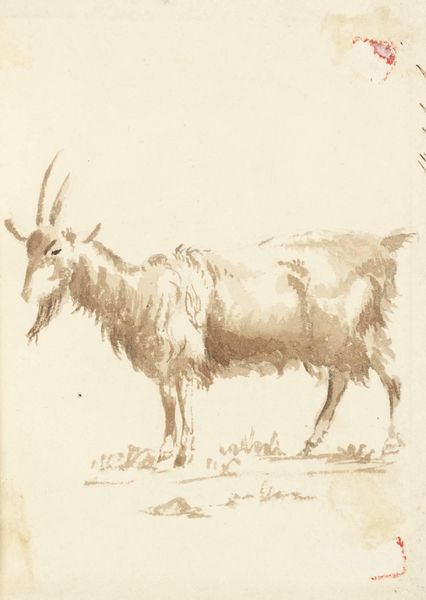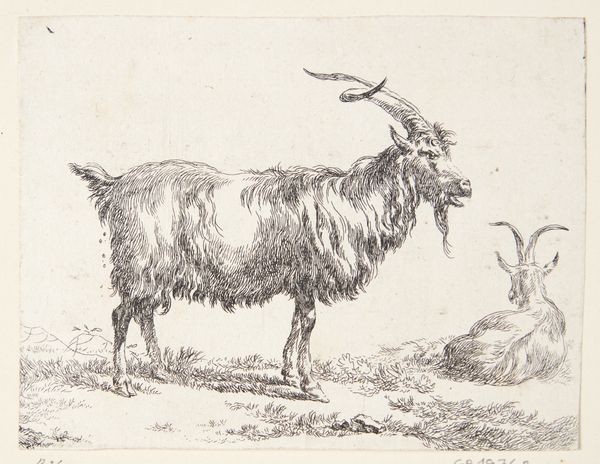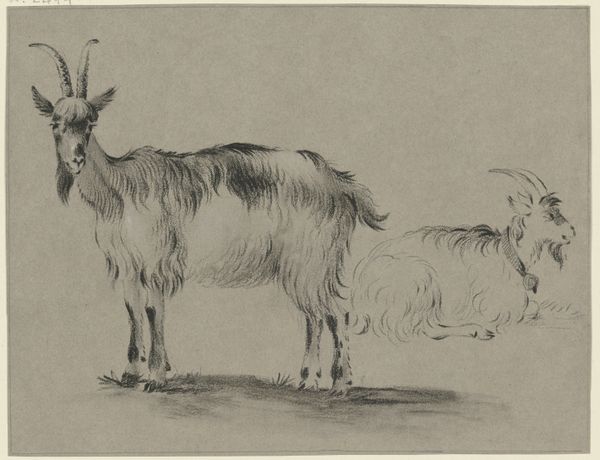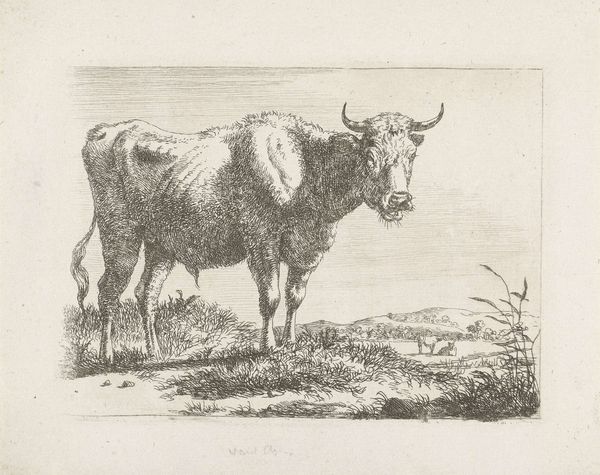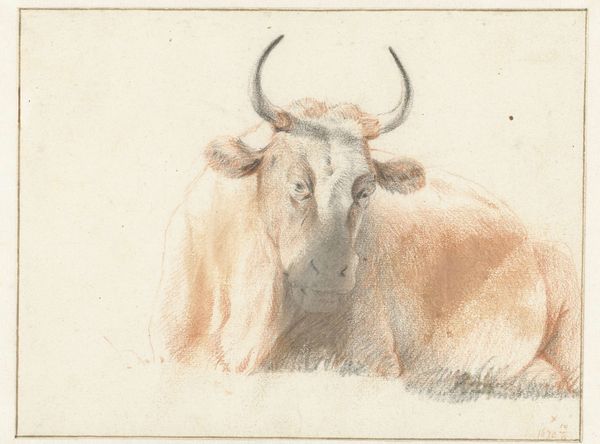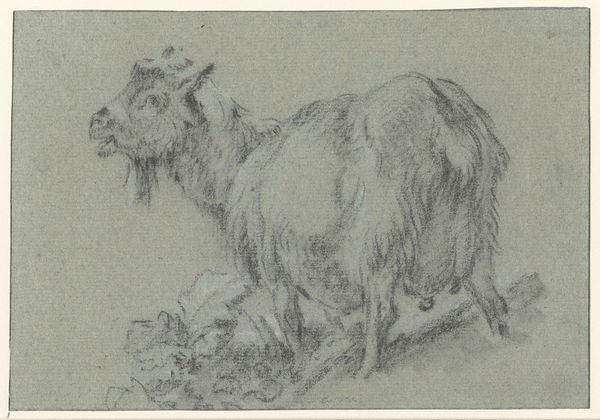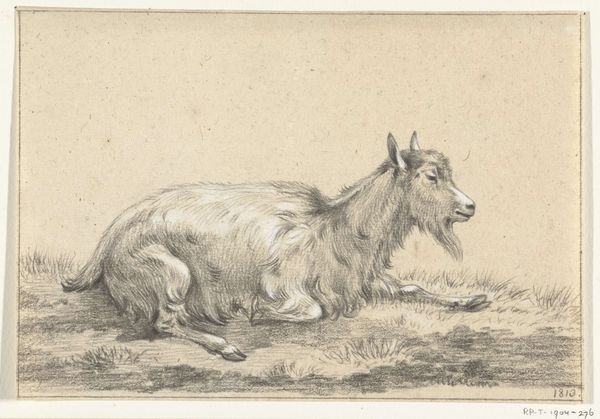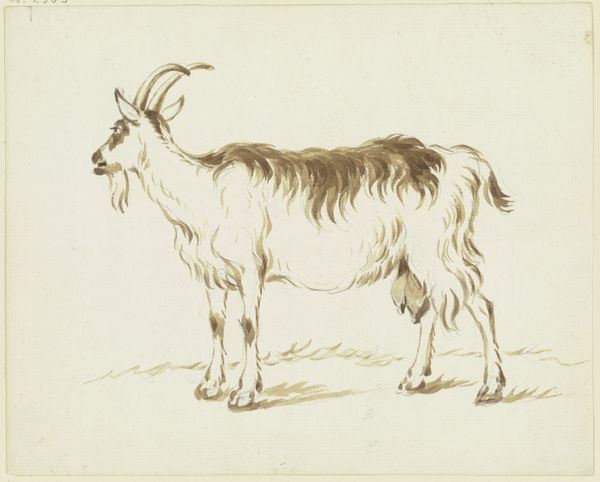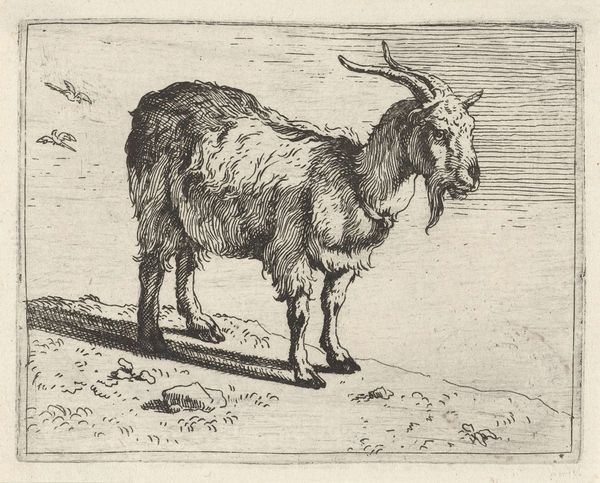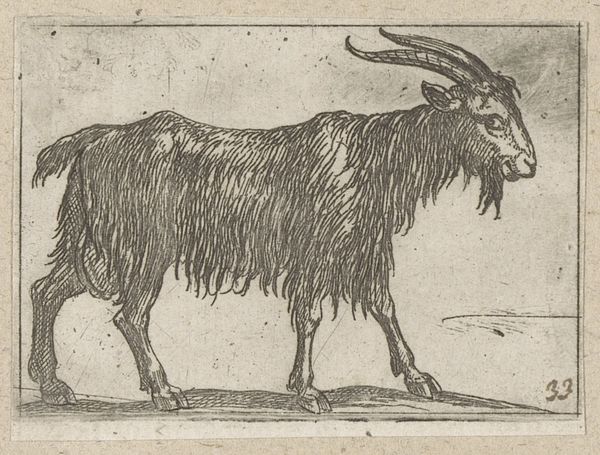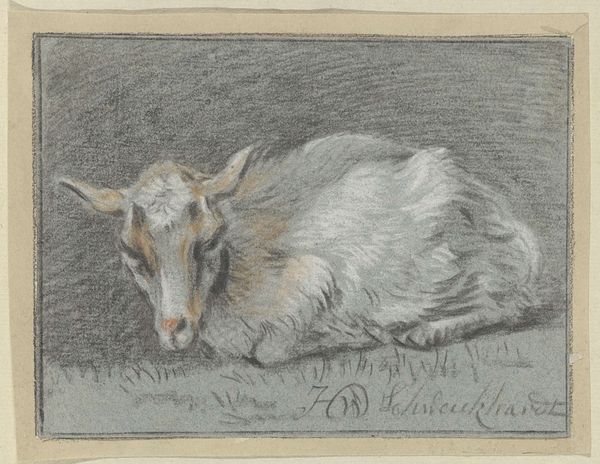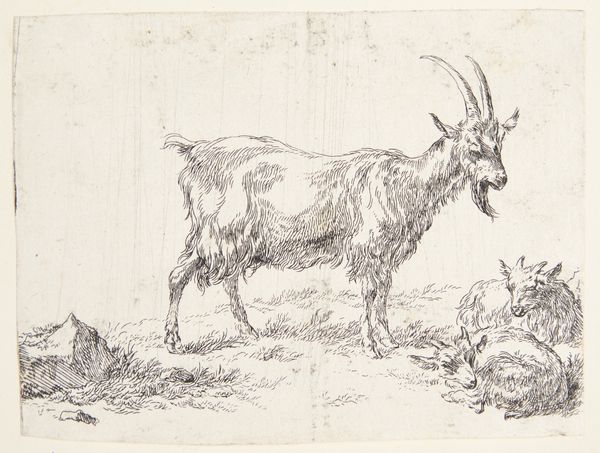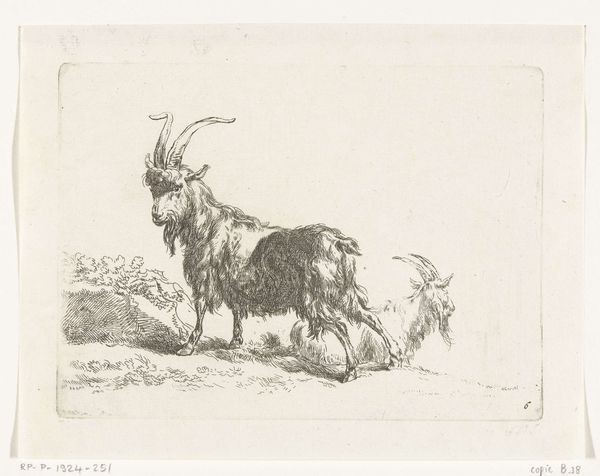
drawing, pencil
#
portrait
#
drawing
#
animal
#
landscape
#
pencil drawing
#
pencil
#
realism
Dimensions: height 101 mm, width 132 mm
Copyright: Rijks Museum: Open Domain
Curator: Here we have "Standing Goat, Facing Right" by Jean Bernard, created sometime between 1775 and 1833. It's a pencil drawing currently residing here at the Rijksmuseum. Editor: It has a serene, almost melancholic quality, don’t you think? The way the pencil work renders the texture of the goat's coat is really interesting; you can almost feel the coarseness. Curator: Indeed. Bernard's work, like much of the art of this period, reflects a growing interest in naturalism and the depiction of animals, influenced by Enlightenment ideals about understanding the natural world. These depictions found their way into broader cultural narratives about nature and society. Editor: It strikes me that the labour of producing these kinds of detailed drawings served as a crucial tool in scientific investigation as well. The material act of drawing helped translate direct experience with this particular animal, the paper, the pencil, all come together to make this rendering exist. Curator: Precisely. Drawings like these played a significant role in scientific illustration, becoming documents themselves and finding use as source material. We often overlook their importance, but even casual sketches could contribute to developing visual vocabularies. Editor: Looking closely at the marks on the page, one could almost retrace Bernard’s labor, seeing the small marks coalescing into a whole form and all those marks serve as some form of evidence. Also, you can almost feel how valuable animal depictions were at the time, almost acting like a commodity due to how rarely citizens came across such sights. Curator: Well said! This ties into how the animal has, over time, functioned symbolically across visual culture as both figures of labor and, also, rural abundance and how they've changed under our contemporary view on animals and nature. It offers insights into evolving perceptions of labor, pastoral life and representation. Editor: It makes you wonder what Bernard intended for this piece. Was it purely observational, commissioned, or did he have a larger narrative in mind for his patron audience at the time? Curator: Regardless, this humble goat drawing offers a surprising glimpse into the intertwined histories of art, science, and society during a period of profound change. Editor: A quiet testament to the value of attentive observation. A truly fascinating depiction to ruminate over when looking at shifts in technique and how labour is valued over time.
Comments
No comments
Be the first to comment and join the conversation on the ultimate creative platform.
